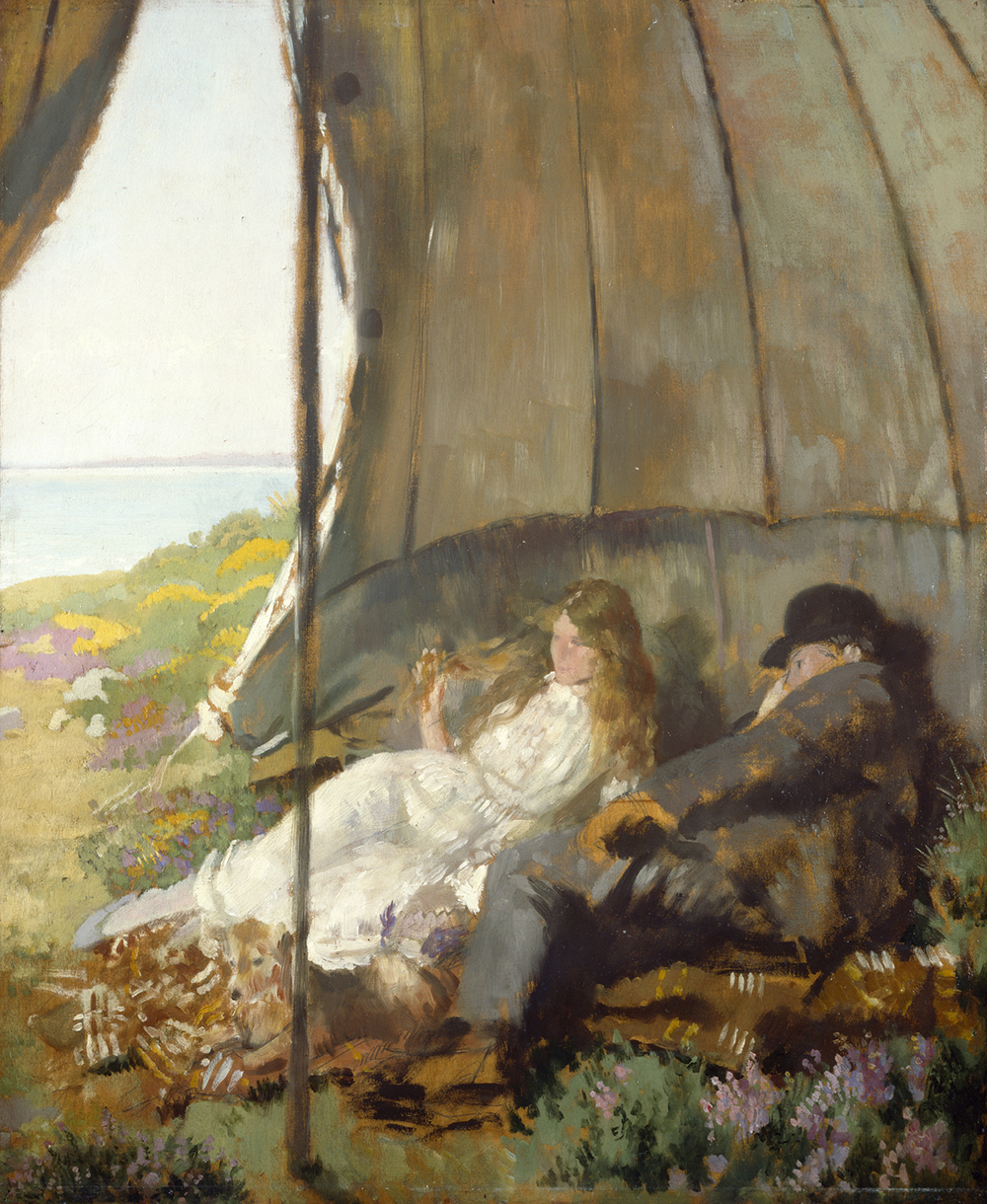 William Orpen (1878-1931), Looking at the Sea, 1912. Photo © National Gallery of Ireland.
William Orpen (1878-1931), Looking at the Sea, 1912. Photo © National Gallery of Ireland.

Follow this step-by-step sensory activity video to create your own miniature sculpture of a wind shelter, inspired by William Orpen's painting Looking at the Sea (1912).
This activity will engage your child’s senses and is particularly suitable for those who seek out sensory input. You'll find all the materials and instructions listed below. Let's get started!
Watch the video!
To watch the video: Due to new e-privacy measures on our site, you'll need to click on the cookie symbol in the bottom-left corner of this page and tick the boxes to accept statistics and marketing cookies in order to watch the video embedded on this page. Alternatively, you can watch it on YouTube.
Materials and instructions
You will need:
- Sticks
- Cardboard
- String
- 4 rubber bands
- Scraps of textured materials
- Scissors
- Glue
- A roll of tape
- Contact paper
Instructions:
- Cut out a square of cardboard and make a hole in each corner.
- Push the ends of the sticks through the holes in your cardboard so that they poke through underneath.
- Bring all four sticks together at the top and tie them securely with some string.
- Wrap a rubber band around the bottom of each stick on the underside of the cardboard to stop the cardboard from slipping.
It's now time to decorate your shelter! There are two options:
Option 1
- Tie some string or wool around the top of one of the sticks and begin wrapping it around the top of your shelter.
- Continue wrapping until you are ready to add the next material.
- Add different coloured strings or ribbons.
- Decide which side will have a doorway and continue adding strings and scraps to the other three sides.
- Add some fabric or paper to create a colourful mat inside your shelter.
Option 2
- Trace around one of the triangular sides of your shelter.
- Cut this triangle out.
- Place the triangle on a piece of contact paper and draw around it three times, lining the triangles up side by side.
- Then draw an extra piece at each end and cut out the whole template in one piece.
- Remove the paper backing from the contact paper, and wrap the contact paper around your tent sticks on three sides, with the sticky side facing outwards.
- Bend the contact paper around the sticks and use tape to secure it.
- Now for the fun part!
- Stick lots of different coloured and textured scraps to the sticky contact paper walls of your shelter.
- Use a piece of paper or fabric to make a cosy mat for inside.
Share your artwork!
Would you like to see your artwork featured on the Gallery's website? Take a photo of your artwork and send it to us by email ([email protected]) or using this online form to upload your picture. We'll feature a selection of pictures in the Creative Challenge Gallery, so check back to see if yours is included!
Upload a picture of your artwork using this form
Inspired by ...
 William Orpen (1878-1931), Looking at the Sea, 1912. Photo © National Gallery of Ireland.
William Orpen (1878-1931), Looking at the Sea, 1912. Photo © National Gallery of Ireland.
This activity is inspired by the colourful painting by Irish artist William Orpen (1878-1931). Orpen often spent his summers in Howth, Co. Dublin, where he painted windy scenes with beautiful light. This painting shows two members of Orpen’s family looking out to sea from their wind shelter.
Credits:
Created by Edel Campbell for the National Gallery of Ireland. With special thanks to Olive (aged 10) and Rose (aged 8).
About our Gallery at Home videos:
Inspired by works in our collection and exhibitions, our creative activities encourage families to work together to create their own artworks. They are specially produced videos for babies, older children and for those who require sensory input. You can find all the workshops in this series here. Enjoy!
Explore more
-

Colouring in the Collection
Download and colour in some works from the national collection
-

National Gallery at Home: Mainie's Mares
Video: Draw cubist-style horses inspired by Mainie Jellett!
-

National Gallery of Ireland at Home: Sensory Spots
Use food to create your own paint and a spotty masterpiece.
-

Ceardlann Gloine Dhaite Céadfach
Déanfaidh an ghníomhaíocht seo céadfaí do pháiste a mhealla
